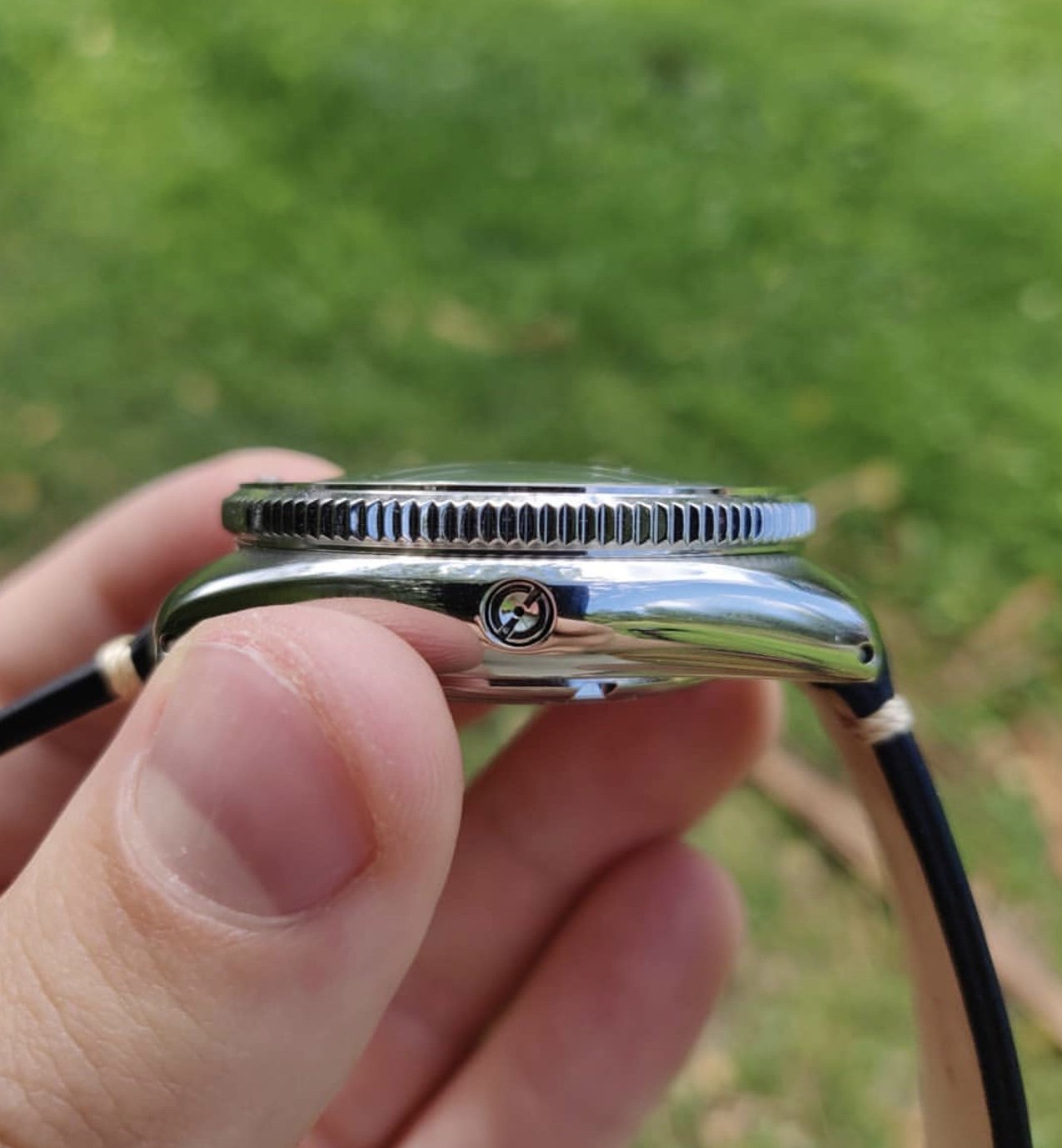Free & Fast USA Shipping Learn More
Our Guide to Helium Escape Valves on Watches

Divers and adventure-seekers alike know that technology can make a world of difference in creating a safer and seamless experience. Diver watches, for instance, were an innovation that was designed to aid expert and enthusiast divers by reminding them when to go back up to the surface.
These watches’ high water resistance makes diver designs extremely durable, but seasoned divers know that no matter how robust their timepieces are, they always pop once they reach greater depths of 250 to 300 feet. That’s where helium release valves come into the scene and save the day.
What is a Helium Release Valve?
Also known as a helium escape valve, this feature is a life-saving one found on some of the best, high-performing diving watches. Crystal Times’ CT703, for instance, combines the stylish allure of the Seiko SKX007 series with the unparalleled functionality of a helium release valve.
The new feature provides aid for professional divers operating at depths greater than 250 feet for a prolonged period of time.
Going below this point means that the gasses found in the water can be toxic, which is why divers who go on these expeditions travel down in a diving bell. It is saturated with a gas mixture of hydrogen and helium to combat the toxic air floating out and about these depths.
How Does a Helium Release Valve Help?
Helium atoms are microscopic, which means they can slip easily into a watch case. This becomes an issue once the diver ascends to the surface with the diving bell. As the environment depressurizes, the build-up of helium atoms can cause the watch to pop the crystal off. This will damage the watch, which can be dangerous if the divers rely on it to tell the time in crucial moments underwater.
That’s why helium escape valves come in handy. They can be opened during the diver’s ascension, allowing the helium to safely escape during the decompression. It’s best to keep the valve closed if it’s not in use as it can invite water and dirt inside. To that end, it’s primarily designed for professional divers rather than everyday use.
How Does the Helium Release Valve Work?
Seeing its potential, various brands have integrated the helium release valve to a number of innovative designs. Currently, there are both automatic and manual operators. The latter design features a different screw-down crown that divers can open to let gasses escape as they swim up. The outside pressure triggers a one-way, spring-loaded valve inside the watch, which pushes out the trapped helium atoms and lower the overall pressure inside of the watch.
The automatic operator, on the other hand, involuntarily releases the trapped helium atoms as soon as the watch reaches a level that is a world away from the one inside the watch.
Wrapping Up: Do You Need a Helium Release Valve Feature?
Unless you’re a professional diver that can descend below 250 feet underwater, a helium escape valve serves more as a conversation starter more than a necessity. It’s a feature that caters to a niche market but is a handy one nonetheless.
If you’re looking for a timepiece that is as functional as it is fashionable in the USA, Crystaltimes offers mod parts that capture the style of the fan-favorite SKX007 with a helium escape valve feature. Get in touch with us today to see how we can help!


